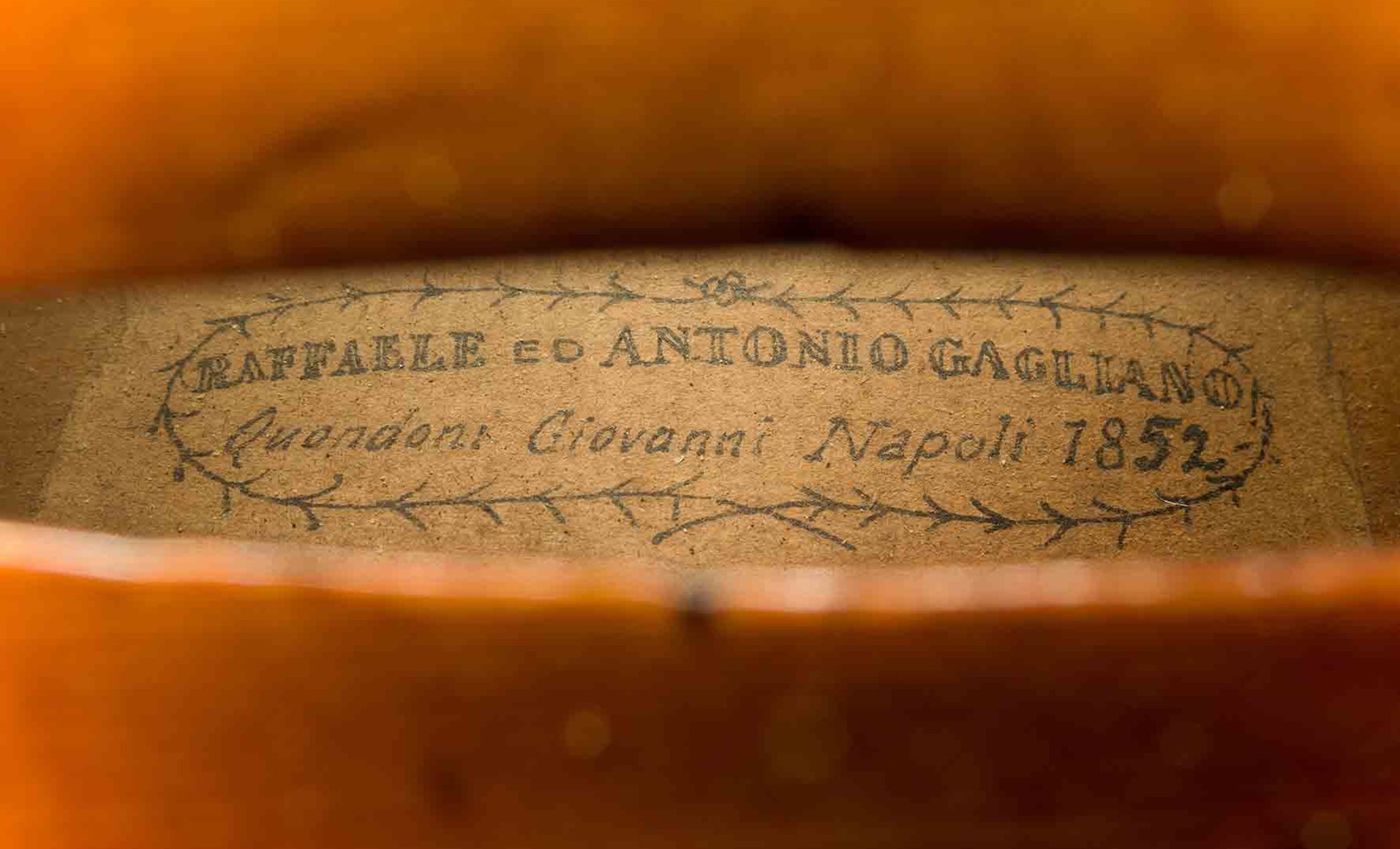Instruments
RAFFAELE AND ANTONIO GAGLIANO, Napoli 1852
The Gagliano dynasty of Naples is possibly the longest and most prolific of any of the Italian violin making families. No fewer than eleven violin makers bore the Gagliano name, from Alessandro in the very early eighteenth century to the last of the line, the brothers Raffaele and Antonio.
Raffaele and Antonio were respectively the second and third sons of Giovanni Gagliano. The two brothers flourished throughout the first half of the nineteenth century. Their lineage is quite complex. Their father, Giovanni, whose name is preserved on their label ‘Raffaele ed Antonio Gagliano Quondam Giovanni’, was himself one of four violin making brothers. Their father was Nicolo Gagliano, held by some to be the finest maker of the whole family, but Ferdinand himself seems to have been apprenticed to his uncle Gennaro, who was a very gifted and adaptable craftsman, possibly more refined and sophisticated even than Nicolo. Alessandro, the father of Nicolo and Gennaro, and the grandfather of Raffaele and Antonio, was a distinctive and characterful maker, whose work belongs firmly in an earlier chapter of violin making, clothed in rich oil varnish and apparently independent in spirit and more freely influenced than the harder-varnished and more obviously Cremona- influenced work of his descendants.
Raffaele and Antonio obviously did have to work hard and quickly to compete with the torrential numbers of instruments available in the nineteenth century, coming from cottage industries in Germany and Bohemia. The signs are clear in the fabric of their instruments. They often lack purfling, a scratched and painted line substituting for the time-consuming inlay of veneers. The wood is often of plain appearance, and the scroll quickly carved, with little time for consideration of symmetry and balance. But the sound is more often than not marvellous. It is hard to imagine their heritage of experience would count for nothing, and what they did have was a good pattern, a good arching, and a basic technique that allowed them to get the best out of the materials at hand.




